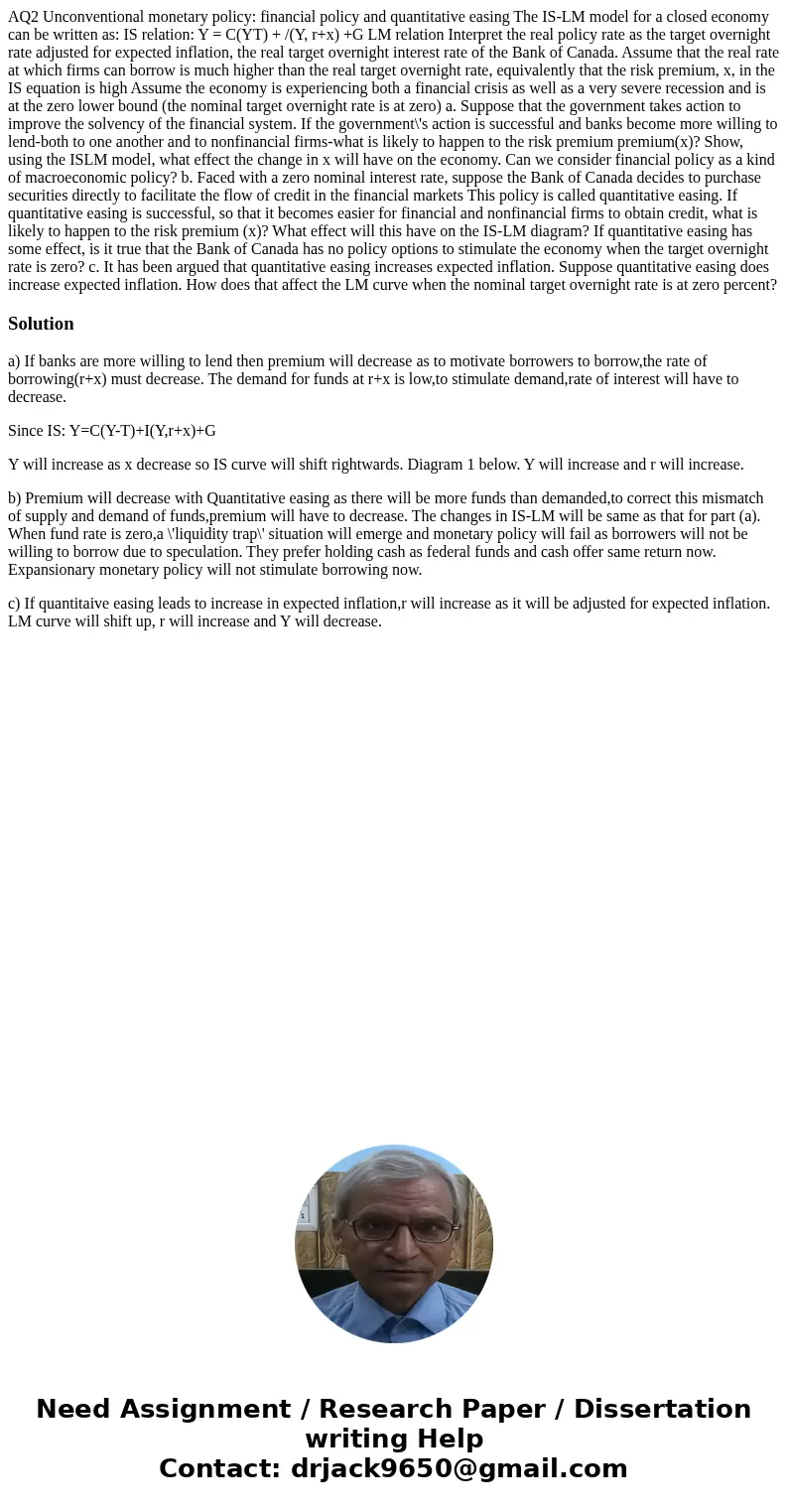AQ2 Unconventional monetary policy: financial policy and quantitative easing The IS-LM model for a closed economy can be written as: IS relation: Y = C(YT) + /(Y, r+x) +G LM relation Interpret the real policy rate as the target overnight rate adjusted for expected inflation, the real target overnight interest rate of the Bank of Canada. Assume that the real rate at which firms can borrow is much higher than the real target overnight rate, equivalently that the risk premium, x, in the IS equation is high Assume the economy is experiencing both a financial crisis as well as a very severe recession and is at the zero lower bound (the nominal target overnight rate is at zero) a. Suppose that the government takes action to improve the solvency of the financial system. If the government\'s action is successful and banks become more willing to lend-both to one another and to nonfinancial firms-what is likely to happen to the risk premium premium(x)? Show, using the ISLM model, what effect the change in x will have on the economy. Can we consider financial policy as a kind of macroeconomic policy? b. Faced with a zero nominal interest rate, suppose the Bank of Canada decides to purchase securities directly to facilitate the flow of credit in the financial markets This policy is called quantitative easing. If quantitative easing is successful, so that it becomes easier for financial and nonfinancial firms to obtain credit, what is likely to happen to the risk premium (x)? What effect will this have on the IS-LM diagram? If quantitative easing has some effect, is it true that the Bank of Canada has no policy options to stimulate the economy when the target overnight rate is zero? c. It has been argued that quantitative easing increases expected inflation. Suppose quantitative easing does increase expected inflation. How does that affect the LM curve when the nominal target overnight rate is at zero percent?
a) If banks are more willing to lend then premium will decrease as to motivate borrowers to borrow,the rate of borrowing(r+x) must decrease. The demand for funds at r+x is low,to stimulate demand,rate of interest will have to decrease.
Since IS: Y=C(Y-T)+I(Y,r+x)+G
Y will increase as x decrease so IS curve will shift rightwards. Diagram 1 below. Y will increase and r will increase.
b) Premium will decrease with Quantitative easing as there will be more funds than demanded,to correct this mismatch of supply and demand of funds,premium will have to decrease. The changes in IS-LM will be same as that for part (a). When fund rate is zero,a \'liquidity trap\' situation will emerge and monetary policy will fail as borrowers will not be willing to borrow due to speculation. They prefer holding cash as federal funds and cash offer same return now. Expansionary monetary policy will not stimulate borrowing now.
c) If quantitaive easing leads to increase in expected inflation,r will increase as it will be adjusted for expected inflation. LM curve will shift up, r will increase and Y will decrease.

 Homework Sourse
Homework Sourse